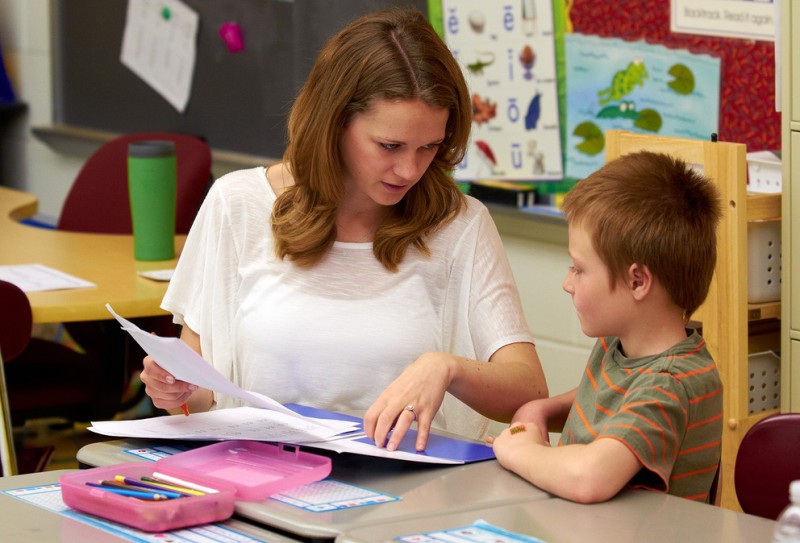After a summer of lazy afternoons and late bedtimes, parents of school-aged children face the deadline for helping their young ones transition to not only a new routine and schedule — but also the academic and social challenges a new school year brings.
“The bigger the transition, the younger the child and the less experience with school, the more potential there is for anxiety,” said James Waxmonsky, associate professor of psychiatry and division chief of child psychiatry at Penn State Hershey.
The transition from pre-school to kindergarten – or from a partial-day to full-day program — is a big milestone for many children. “It has the most physical changes — they are riding a bus for the first time and learning how to order food in the cafeteria from a stranger,” Waxmonsky said.
His tips for easing the transition:
*Take advantage of opportunities to gain experience. School tours and meet-the-teacher events, practice ordering food in the cafeteria or riding a school bus provide exposure and experience that help both children and parents keep anxiety at bay.
*Keep your own emotions under control. “Kids mirror parental reactions, so if you show a lot of anxiety, distress and worry, you are inadvertently going to trigger that in your child,” Waxmonsky said. “If they see you calmly negotiating stressors, it certainly makes it easier.”
*Avoid the urge to linger. “Let the school professionals take over once the child is at the school building,” Waxmonsky said. “And if you have a concern about something, work it out in advance or afterward — not in front of the child.”
*Start schedule changes early. “You can realistically expect to change bedtime by about 30 minutes per night, so figure out how far you need to get,” Waxmonsky said. One key to making that work is waking the children earlier in the morning as well: “Otherwise, you won’t get them to bed on time.”
*Explain expectations. Talk about things like what goes in the backpack, where they can find your phone number, packing their own book bag and picking out clothing the night before – all that can ease the morning chaos.
For older elementary children – and those transitioning to middle school – there are other things to consider:
*Get their brains back in gear. Have children read or practice math a little bit each day, especially as the summer break winds down. “Every child benefits from a little ongoing academic work throughout the year,” Waxmonsky said. “Think of school as a skill set – if you took three months off from anything else, you’d lose what you learned.”
*Prepare for what you can, don’t worry about what you can’t. Find out where the bus stops, what time it comes and how long middle school students have between classes. Buy a combination lock and let your new middle-school student practice opening it quickly to prevent stress and anxiety during quick class changes. But don’t try to figure out who will be the best teacher for your child. “You don’t have that control, and every child has individual reactions to particular teachers,” Waxmonsky said.
*Have some fun with the transition. Let children have input in back-to-school shopping and make time to do fun things as you prepare for the return to school. Let kids vent about summer being over and school starting up. But then remind them of positive things they have to look forward to such as seeing friends and participating in extracurricular activities they enjoy.
The Medical Minute is a weekly health news feature brought to you by Penn State Milton S. Hershey Medical Center. Articles feature the expertise of Penn State Hershey faculty physicians and staff, and are designed to offer timely, relevant health information of interest to a broad audience.
